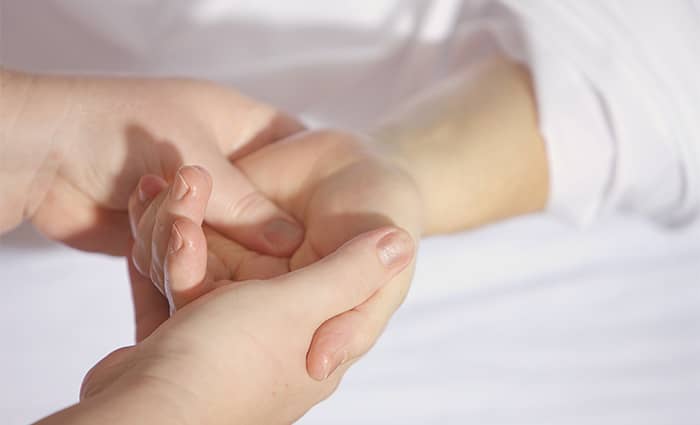Ganglion cysts are a common lump that appears along your joints or tendons. While ganglion cysts can sometimes cause discomfort, it’s important to remember these lumps are noncancerous and mostly harmless, so there is no need to worry. They also shouldn’t spread. If you are wondering if you have this type of cyst, or are simply wondering what is a ganglion cyst, keep reading to learn more.
What is a ganglion cyst?
This type of cyst contains a jelly-like fluid that fills just under the skin. Usually, it can be found near a joint or tendon near the hand or wrist but may also occur on the ankles and feet. Depending on where the cyst appears, it will have a different name. For example, if the cyst appears at the top of the wrist, it is called a dorsal ganglion cyst. One that is on or near the palm is called a volar wrist ganglion cyst. These two areas are the most common areas for a cyst to appear. Individuals of any age can develop these cysts, including children. Typically, however, they are most common in those who are ages 15 to 40. Between the genders, it is more common for females to develop these cysts than men. Ganglion cysts developing is a common occurrence, and in most cases, they are not harmful to the individual.
What causes a ganglion cyst?
These cysts form due to the tearing of the tissue that covers the joint or tendon. After it is torn, the tissue will develop a sac that fills with fluid, resulting in inflammation. However, what causes the sac to develop is unknown. This type of cyst can appear without any warning signs. They can also quickly disappear for no apparent reason. The cyst can grow larger if one continually exercises using that joint or uses the joint more frequently. Therefore, giving that area of the body time to rest may help reduce the cyst’s size.
What are the symptoms?
In most cases, a ganglion cyst is not painful. Once the cyst enlarges, there may be tension or pressure felt when using the affected area. If it develops around a nerve, it usually causes more pain or can result in tingling and numbness. There may also be a decreased range in mobility or grip strength. If a patient with this type of cyst is experiencing pain, it is typically not severe. You may not even know you have a cyst apart from a bump appearing on the wrist. For a patient to be diagnosed with a ganglion cyst, you will need to visit your orthpaedic doctor for an evaluation. Typically, no special exams are required, but in some cases, an X-ray or MRI will be ordered to rule out other issues.
What are the treatments?
Most ganglion cysts will go away on their own without any treatment necessary. Even those individuals that receive treatment can have cysts reappear. Waiting for them to disappear may take quite a bit of time, anywhere from one year to 18 months. Your doctor may suggest simply waiting for it to go away if it is not causing discomfort. However, if it is causing issues, then there may be a few options that your doctor recommends. Splinting is one form of treatment in which the cyst is immobilized as a brace will keep the joint from moving, preventing further discomfort. It can also reduce swelling. Another treatment is an aspiration, where the fluid from the cyst is removed using a needle. Before the procedure takes place, the area will be numbed, and then your doctor will remove the fluid. Unfortunately, in most cases, the cyst will fill with fluid again. Using aspiration is not suggested if it is a volar wrist cyst, as this could cause damage to the nerves.
Another treatment is to remove the cyst surgically. First, you will receive anesthesia. Then your doctor will cut out the ganglion cyst, as well as the tissue that covers the joint or tendon. You will then be placed in a splint which is worn for about two weeks. This form of treatment is the most successful in keeping the cyst from coming back.
Treatment for ganglion cysts in Raleigh and Cary
Most ganglion cysts are not harmful and do not cause pain. If you find that you have symptoms of a cyst that continues to be painful, reducing your range of motion or is getting larger, you should make an appointment to see your orthopedic specialist.
Our highly trained orthpaedic doctors have vast experience in dealing with ganglion cysts and other orthopaedic conditions. Contact us today to see how we can help you get back in motion.






